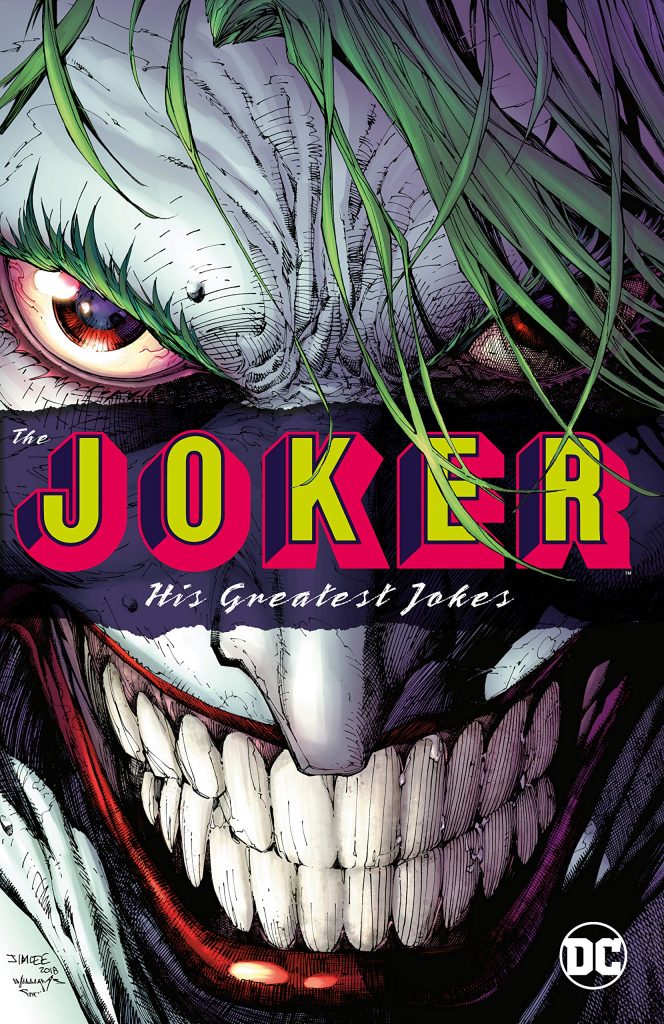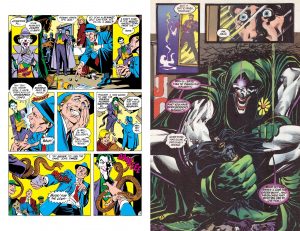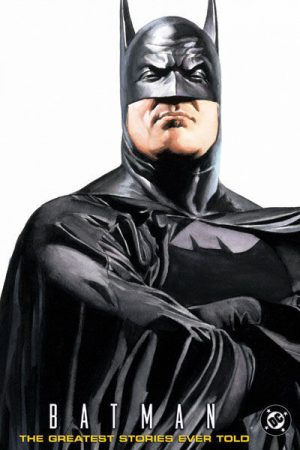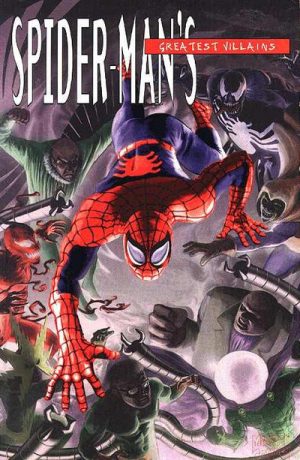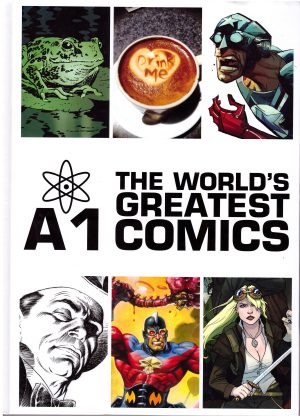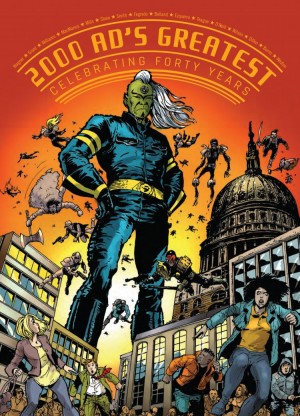Review by Frank Plowright
With several expensive Joker Greatest collections already issued, two within five years of this publication, the problem for editors is how to fill another without duplicating the content, particularly as The Bronze Age Omnibus already spans 1970-1986. Further hindering choice is that stories continued over several issues became the norm during the 1980s, leaving very few shorter episodes not already gathered.
Thankfully, a couple of gems are present, as by some distance the two best stories involve not just Batman, but characters infinitely beyond the Joker’s power scale who ought to be able to deal with him in an instant. Both scripts, however, work round this pleasingly. John Ostrander and Tom Mandrake have the inordinately powerful Spectre infected by the Joker, and it’s a delight, with plenty of prime Joker sequences while still offering a new insight or two. Ostrander’s able to get some things off his chest and Mandrake’s Joker Spectre is chilling. Paul Dini surprises us with his look at an arrogantly unpleasant stage magician performing in Gotham, which Don Kramer draws up a storm. The Joker is treated imaginatively, Batman’s fractured relationship with Zatanna is spotlighted, and while under most circumstances the Joker should be no threat to her, these aren’t most circumstances.
The most recent inclusion dates from 2018 as Harley Quinn takes her revenge on the Joker. It’s nicely drawn by Sami Basri, but Tim Seeley’s confessional script is too strained, too closely following the pattern of other strips about Harley and the Joker. And while it may have been original in 1941, the same can be said of the earliest strip as Bill Finger and Bob Kane have the Joker committing crimes across the USA. There’s a novelty to David Vern’s idea of the Joker looking for someone to write gags in the 1950s, but the idea is never fully explored, while the Joker’s son from 1962 is just completely mad, Finger and artist Sheldon Moldoff thinking visually and stringing their plot around showpieces. They’re all the Joker as he once was, but not very interesting now. The late 1960s is represented by John Broome and Bob Brown very much basing their approach on that of the 1960s Batman TV show, with a cackling Joker, plenty of henchmen, oversized props and one good plot switch, which isn’t enough to rescue the story from novelty value only.
Three stories from the 1970s and the 1980s are also available in the larger Bronze Age Omnibus, but provide a sample of the era via the Joker still largely reliant on gimmicks via Denny O’Neil, Gerry Conway and Doug Moench, but the quality of the art leaps enormously. Irv Novick’s clear storytelling is under-rated, Don Newton also, but the era’s star turn is José Luis García-López (sample art left) with some stunning pages, wasted on the daft story of the Joker wanting to create his own Mount Rushmore style monument.
His Greatest Jokes is a title setting up the collection be knocked down, and even accounting for the limitations on the selection it’s not first rate, never mind The Joker’s Greatest. A lesson never leaned by the superhero publishers is that punting out a collection bearing little resemblance to the content of a movie it coincides with might make some money, but only at the cost of ensuring it’s a long time before any new readers sample a graphic novel again.
